



Elevated valuations and limited near-term earnings visibility call for caution, says Chirag Mehta, Chief Investment Officer, Quantum Asset Management Company. He believes that the broad-based rally in equities is likely to give way to a more selective market where quality and fundamentals will triumph.
In an interview with Moneycontrol, he also talked about the most important monitorable for the market, sectors with long-term structural bets, and themes he is avoiding right now.
Edited excerpts:
Will the party continue in the Indian market?Indian markets have rallied strongly since April 2nd, 2025, with double digit gains in the frontline indices, which are approaching their previous peak. Mid and smallcap indices have risen more. Though the 'risk-on' sentiment has returned, elevated valuations and limited near-term earnings visibility call for a degree of caution.
Also read | Prateek Agrawal shares Motilal Oswal Mutual Fund's play on long-term growth themes
Looking ahead, equity market performance will likely be shaped by five critical drivers: the outcome of the US-India trade negotiations, progress of the southwest monsoon, deflationary pressures from excess Chinese manufacturing capacity, government and private capex trends, and the direction of global and domestic investment flows.
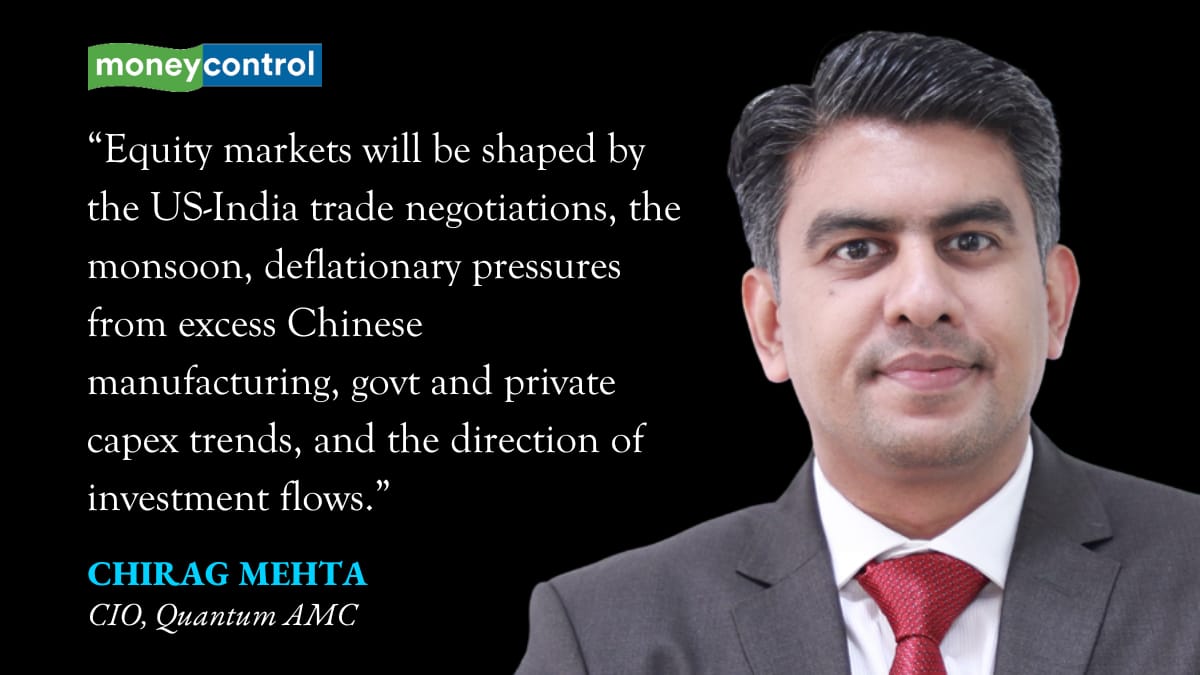
Near-term growth momentum is expected to be led by rural demand, aided by higher government procurement prices and strong kharif prospects. At the same time, while private sector capex may be temporarily held back due to trade policy uncertainty, well-capitalised corporate balance sheets indicate readiness to invest once clarity and growth emerges.
While we are fundamentally bottom-up investors, we recognise that companies don’t operate in a vacuum. We continually monitor the evolving external environment and stress-test our portfolio companies for potential impact on earnings.
We watch two key macro variables closely: rising crude oil prices and a potential increase in India’s defence spending. Both could pose risks by diverting fiscal resources from growth and social sector priorities. That said, unless we see a material and sustained rise in either, we do not expect a significant deviation from India’s current growth trajectory.
Also read | Active investing still beats passive strategies fairly often, says Arun Kumar of FundsIndia
What do you think is the most important monitorable for the market right now?The most important monitorable for the market right now is the trajectory of economic growth. While the macro setup remains broadly supportive — with healthy corporate balance sheets, lower crude prices, and declining interest rates — growth on the ground has been somewhat muted, partly due to global uncertainty.
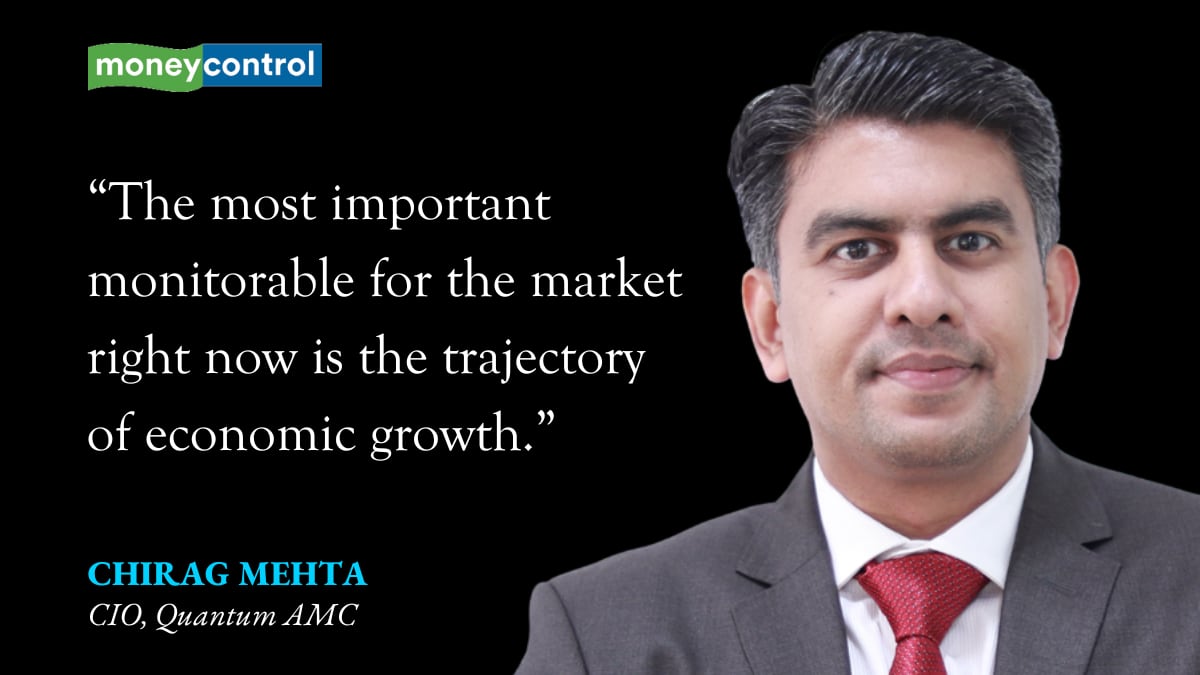
That said, there are encouraging signs. We expect growth to gain momentum supported by sustained government spending, a third consecutive year of strong agricultural output boosting rural demand, and the lagged positive effects of tax cuts and monetary easing.
Monitoring how these factors translate into actual on-ground activity will be critical in shaping market direction over the coming quarters.
Which sectors do you see as long-term structural bets for India?India’s structural growth story — driven by a long-term real GDP growth potential of 6.5–7 percent — is underpinned by rising per capita income and a broad-based shift in consumption. This creates compelling opportunities across several under-penetrated and high-growth sectors. We see three key themes leading this transformation: domestic consumption, infrastructure, and exports.
With the recent price and time correction, largecap valuations have moderated to just above historical averages. While mid and smallcaps remain relatively expensive, there are still select opportunities within the broader smallcap universe. In this environment, a bottom-up, stock-specific approach becomes critical for generating returns.
Also read | A bet on urban India: How municipal bonds are slowly gaining traction
The areas we're most convinced about over the long term are BFSI, consumer discretionary (particularly auto), and technology. These sectors have strong structural tailwinds, supportive policy frameworks, and scalable long-term growth potential, making them core components of our portfolio strategy.
Are there any sectors or themes you’re avoiding right now?We avoid sectors where valuations appear stretched, even after factoring in realistic growth assumptions. Areas like capital goods, defence, and metals are getting expensive, and do not offer a favourable risk-reward trade-off. While the themes may be structurally positive, we remain disciplined on valuation and prefer to deploy capital where both fundamentals and pricing align to support long-term returns.
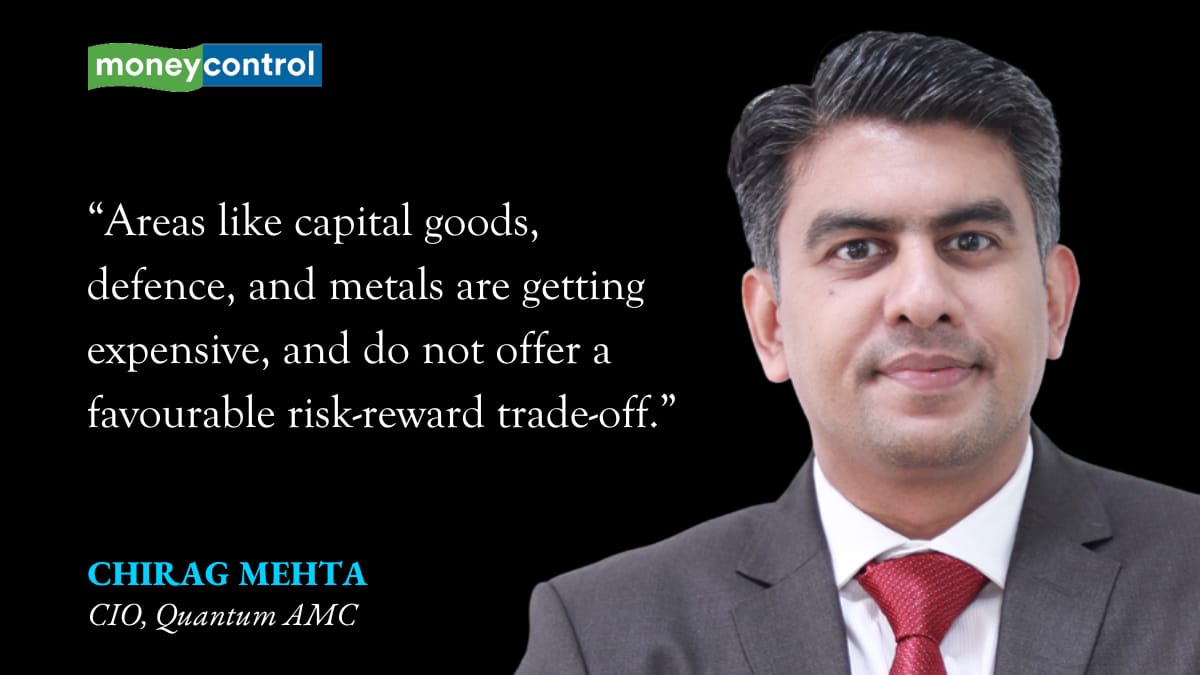
The Quantum Small Cap Fund follows a rigorous bottom-up stock selection approach within a disciplined investment framework, with clear guardrails to manage risk and navigate the inherently volatile smallcap space. We place strong emphasis on liquidity and market cap ownership, ensuring that the fund can scale without compromising portfolio quality or flexibility.
We follow an S-Garp (Sustainable Growth at Reasonable Price) approach where we look for growth opportunities available at a reasonable valuation. The portfolio typically consists of 25–60 high-quality smallcap stocks, selected for their sustainable business models, strong corporate governance, and reasonable valuations. Our approach is to stay diversified while avoiding over-diversification — where too many low-weight holdings dilute the impact of stock outperformance.
Key risk management principles include position sizing, wherein we cap individual holdings at 4 percent of the portfolio to manage liquidity risk and ensure meaningful diversification.
We also rebalance positions based on the stock’s target price and earnings outlook. If a stock reaches its fair value and we don’t see further earnings upgrades, we gradually exit.
Also read | Buying property abroad? What Indians need to know about the rules, risks and restrictions
Further, a key pillar of our process is management quality. We avoid companies where there are concerns around integrity — even if they carry significant weight in benchmark indices. Preserving capital is more important than chasing short-term gains.
Finally, valuation discipline. Our S-GARP approach ensures we invest in businesses with long-term growth potential that are not overvalued. We also use PEG (Price-to-Earnings Growth) as a key screening tool within the diverse smallcap universe.
Do you see a trade-off between ESG focus and alpha generation?We don’t see a trade-off between ESG and alpha generation — rather, we see ESG as complementary to our risk management and long-term value assessment. ESG integration enables us to evaluate critical non-financial risks that traditional models often overlook — whether it's governance lapses, or regulatory, disruption, security related risks.
Regardless of short-term political or regulatory shifts, climate and sustainability issues will continue to shape business models and capital flows. As these risks become more evident — and as investor preferences evolve — companies that are ahead on preparedness are likely to be better positioned (for success).
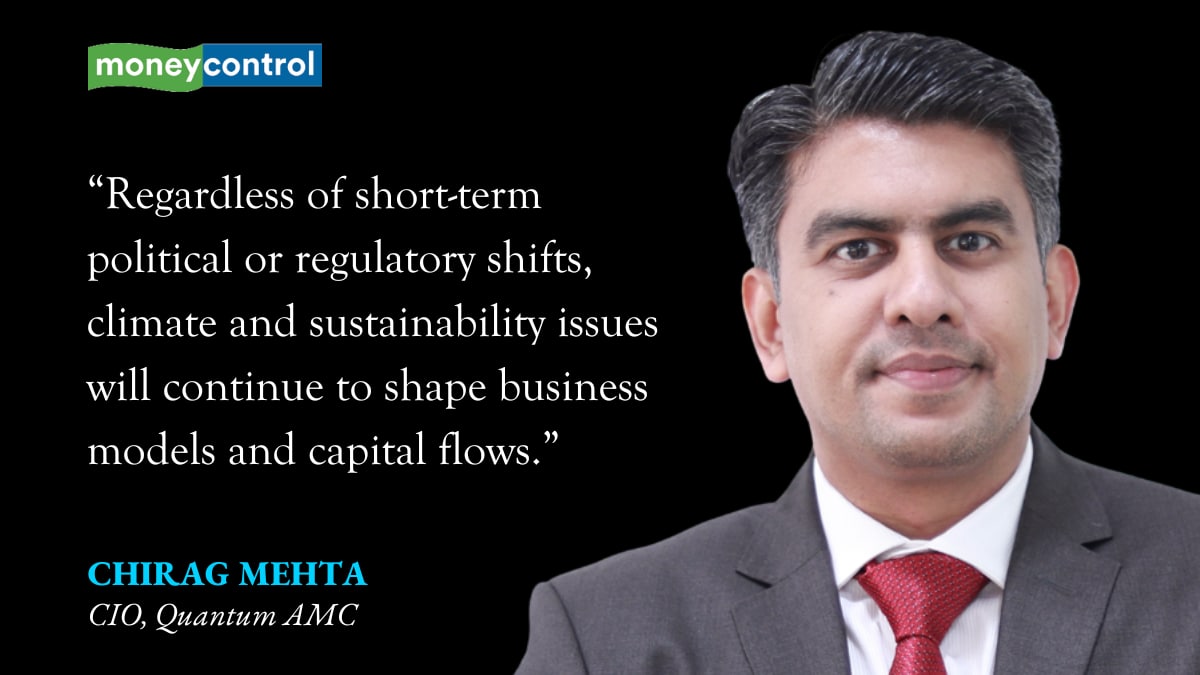
From an alpha perspective, integrity offers several advantages as it aligns with a medium-to-long-term investment horizon, since structural shifts take time to reflect in valuations. Integrity assessment helps uncover resilient, forward-looking business models.
In markets like India, where ESG is still evolving and often mispriced, there are genuine opportunities to gain an edge through differentiated insights.
The current inconsistency in ESG data introduces inefficiencies — and we believe that’s where active managers can identify mispricing and avoid greenwashing traps.
Importantly, ESG helps improve the overall risk-adjusted return profile by incorporating unconventional, non-financial risks into our investment process.
How do you manage ESG-related risks, such as regulatory shifts or reputational damage?We are cognisant of the regulatory risks pertaining to some industries more than others. For example, environmental compliance is critical in heavy industries and regulatory compliance is critical for defence companies. Meanwhile, governance and data privacy are more material reputational risks for finance and IT companies.
Also read | Foreign Affairs: Overseas stocks that Indian mutual funds are embracing and rejecting
We maintain a dynamic assessment, which incorporates sector-specific nuances to assess the most financially relevant ESG factors. These ESG risks are implicitly embedded in our broader portfolio risk framework. They influence position sizing and sector allocation decisions, ensuring ESG is treated as a core component of our risk-adjusted return strategy. Companies with deteriorating ESG profiles or governance concerns are flagged for deeper review or potential exclusion.
To manage the abovementioned risks, we engage directly with the company management to understand their ESG preparedness, especially around climate transition, board independence, and social impact. This helps us assess reputational risks that may not be evident from public data.
One piece of advice for investors looking at major developments and market gyrations every day?Tune out the noise and stay anchored to your long-term objectives. Markets will always react to daily news — economic data, policy announcements, geopolitical shifts — but not every headline warrants a portfolio response.
The real value in investing comes from patience, discipline, and clarity of purpose. Focus on fundamentals, not fluctuations. If you're investing in quality businesses with strong governance, sustainable growth, and reasonable valuations, short-term volatility becomes an opportunity, not a threat.
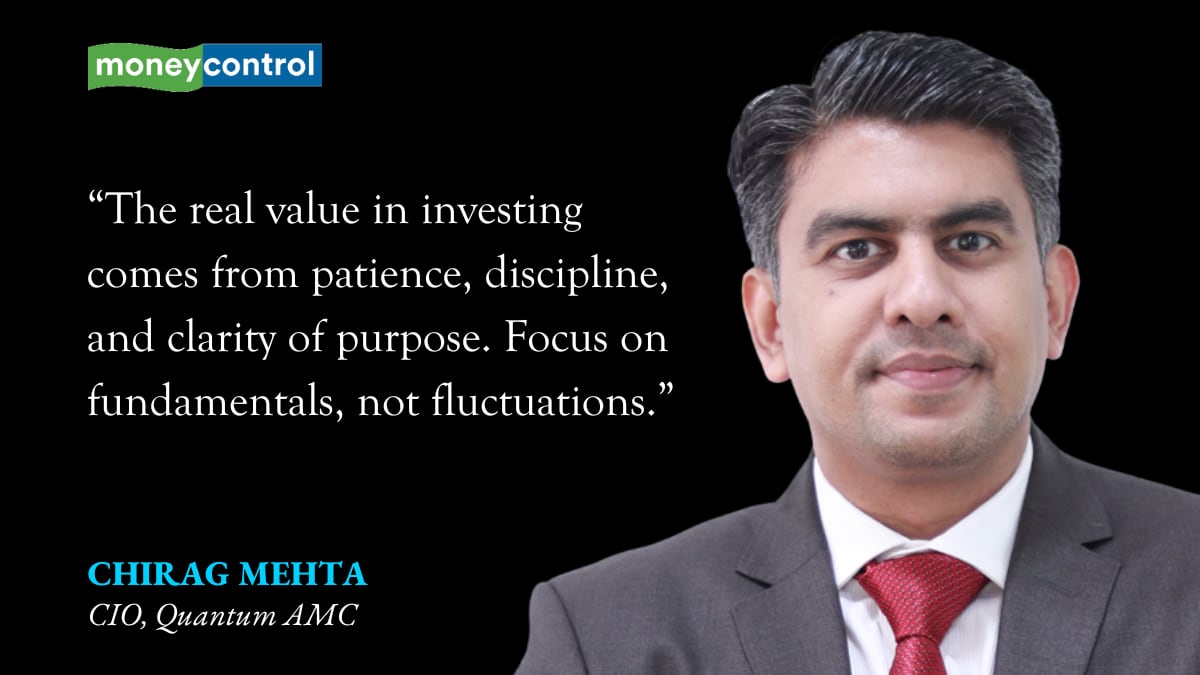
At the end of the day, wealth creation is a marathon, not a sprint. Let your strategy — not sentiment — drive your decisions.
If someone has Rs 10 lakh to invest now, what should be the asset allocation across equities (midcap, smallcap, largecap) and other asset classes?Given the ever-evolving economic landscape, we continue to advocate Quantum’s time-tested 12:20:80 asset allocation framework for investors seeking a robust, all-weather portfolio. It's a simple yet effective approach designed to manage risk while participating in India’s growth story.
Investors need to be systematic and avoid timing the market, particularly in periods of heightened volatility and uncertainty. The model, anchored in adequate liquidity, a meaningful gold allocation, and disciplined equity diversification, remains our recommended approach for new investments.
For example, if one is investing ₹10 lakh, allocate for safety (One-time 12 months' expenses), diversification (20 percent in gold), and growth (80 percent in equities). This balances risk and reward, especially in uncertain times.
Also read | Investing in internet funds? Factors to track before taking the plunge
Distribute across market caps for balanced exposure: prioritise largecaps to build a solid, resilient foundation, with measured bets on mid / smallcaps for an upside. Use diversified funds to mitigate the risk from uncertainties.
This structured allocation ensures you're not overexposed to any one asset class, while still giving your capital the opportunity to grow with the economy. The most important discipline is to stay invested, rebalance, and avoid reacting to daily market noise.
In summary, while the "party" in the Indian market isn't over, the music has changed. The broadbased rally is likely to give way to a more selective market where quality and fundamentals will triumph.
Discipline and patience will be the most valuable assets in the coming year.
Discover the latest Business News, Sensex, and Nifty updates. Obtain Personal Finance insights, tax queries, and expert opinions on Moneycontrol or download the Moneycontrol App to stay updated!
Find the best of Al News in one place, specially curated for you every weekend.
Stay on top of the latest tech trends and biggest startup news.